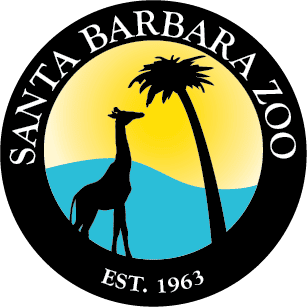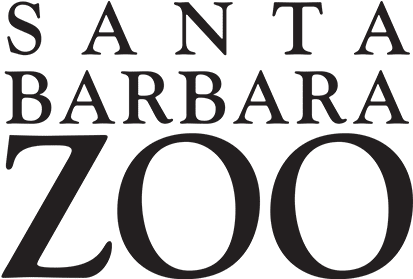Introduction
This style guide provides a reference to common words and terms used in written and online material particular to the Santa Barbara Zoo. It is not intended to be a comprehensive manual of grammar and style.
Word List
behind the scenes Use as three separate words, except when using as an adjective e.g., “Zoo campers go behind the scenes” vs. “Zoo campers take a behind-the-scenes tour” (see Dashes and Hyphens)
email is written as one word, no hyphens
For guests 21+ only Write this way for Zoo events with minimum age requirement.
island fox To be used when referring to generic species of the island foxes endemic to the Channel Islands. May use capitals when referring to subspecies, e.g. Santa Rosa Island fox. We will not use the term “Channel Island fox” going forward.
Member is capitalized when referring to Santa Barbara Zoo Members, e.g. “Santa Barbara Zoo Members love Duncan the dinosaur,” and also the Zoo’s Membership categories, e.g. Supporting Membership, Family Membership, etc. When writing a sentence without “Santa Barbara” or a membership category, use lower case, e.g. “The Zoo has more than 15,000 member households.”
microtrash is written as one word, no hyphen
nonprofit is written as one word, no hyphen
over/more than vs. under/less than When referring to numbers or quantity, use “more than” and “less than,” e.g., “Penguins eat more than 2 pounds of fish every day.”
“Over” and “under” should be used when referring to location and conceptual amounts, e.g. “Ralph likes to rest under the rock overhang.”
Zoo Always capitalize when referring to the Santa Barbara Zoo; use lowercase in all other instances e.g., “We hope you enjoyed your Zoo visit today!” vs. “The AZA has accredited more than 200 zoos and aquariums across the country.”
Zoo Camp Always capitalize when referring to the Zoo’s Camp program, even when the “Zoo” is implied, e.g., “The Camp day begins at 9 AM.”
Zoo Catering Services by Rincon is how we refer to the Zoo’s catering company, with one exception: as of 4/2017, use “Rincon Events” for Zoofari Ball recognition.
Abbreviations and Acronyms
In most cases, spell out on the first reference and follow with the acronym in parentheses (if there are subsequent references): e.g., “Association of Zoos and Aquariums (AZA).” No need to refer to the acronym unless the organization will be mentioned again in the piece you are writing.
Abbreviations should always be written in all caps and no periods, e.g. VIP or CEO. Some frequently used acronyms:
AZA Association of Zoos and Aquariums
CEO Chief Executive Officer
SSP Species Survival Plan
USFWS United States Fish & Wildlife Service
VIP Very Important Person
Date and Time
Date Use the format October 3, 1983 when writing the date. If not using the year, write date as follows: “Zoo Camp begins December 22.” Do not use 1st, 2nd, etc. when writing dates unless the sentence is structured as follows: “The Director’s Luncheon will be held on the 5th of May.”
Time Use uppercase letters without periods to relate the time of day, e.g. 2:00 PM. If a time frame is used that is only in the morning (or afternoon), the “AM” or “PM” need only be used once, i.e. “Parasitology class will be held from 5:00 to 8:00 PM on June 23.”
Donor Lists
Alphabetizing Companies Use the first letter of the first word in the company name, even when it is a person’s name (excluding articles)
Alphabetizing Foundations Use first letter in first word of the foundation name (excluding articles).
Anonymous Donors ‘Anonymous’ goes at the top of the donor list. If there are multiple anonymous donors, indicate such in parentheses, e.g.
Anonymous (4)
Deceased Donors Use italics to indicate deceased donors, and notate at bottom of list as follows:
John Deere
Jon S. Mulligan
Sandy Shalhoob
Deceased
Initialed Names Use periods and no spaces, e.g. C.P Huntington
Sample List
Elaine Mah Best (goes under B)
Belle, Daniel, Felix & Colette Cohen (goes under C, no comma before &)
In memory of Gary Cooper (goes under C, use last name of memorialized person)
Harold Simmons Foundation (goes under H)
Hutton Parker Foundation (goes under H)
Sally Jones & Doug Lew (goes under J, use last name of first person in pair to alphabetize )
Elaine Knowes-Best (goes under K)
Doug Lew & Sally Jones (goes under L)
Ellen & Tom Orlando and The Lehrer Family Foundation (goes under O)
Robert K. & Barbara J. Straus Family Foundation (goes under R)
Santa Ynez Band of Chumash Indians Foundation (goes under S)
Carlene & Scott Wilson & Family (use & with “Family” as they are same entity)
Jean & Davis von Wittenburg (goes under V)
The Wood-Claeyssens Foundation (goes under W)
Formatting
Capitalization, animal names Use capital letters for proper nouns or geographic terms when writing animal common names, e.g., California condor or Western pond turtle. Use lower case otherwise, e.g. giraffe, meerkat, or snow leopard.
Capitalization, departments Use lower case, e.g. “The Zoo’s education department gives recycling a thumbs-up.”
Capitalization, family names When listing a family in a donor text or list, Family should be capitalized: i.e., “the Dreier Family” (text), or “The Dreier Family” (list)
Capitalization, titles Capitalize if title precedes the person’s name, e.g. “Zoo President Rich Block likes dogs.” Do not use when it follows, e.g. “Rich Block, the Zoo’s president, likes dogs.” Also capitalize titles when used in a list, e.g.,
Rich Block, President/Chief Executive Officer
Corinne Santini, Director of Human Resources
Pricing Use this format when pricing anything that includes a discounted price for SB Zoo Members: $20/day, $15/day for SB Zoo Members
Sentence spacing Use one space between a period and the next sentence. Not two.
Websites Drop the “www.” when referring to the Zoo’s, or any other, website, e.g. “sbzoo.org” or “amazon.com.”
Grammar and Punctuation
Ampersands Use only when referring to people in a list, e.g. “Gerd & Pete Jordano” or dates, e.g., “Zoo Camp is offered Dec. 21–24 & Dec. 27–31.”
Animal pronouns When referring to animals, use ‘it’ or ‘its’ unless a named animal (or numbered if California condor), then ‘he’ or ‘she’ should be used accordingly, e.g. “The otter uses its paws to grasp a fish.” (versus) “Katniss holds the fish in her paws.”
Animals and programs at the Zoo When writing about animals (or programs, guests, etc.) at the Zoo, avoid the use of possessive phrasing, e.g. “the Zoo’s animals/programs” and opt for phrasing such as “animals/programs at the Zoo.”
Bulleted lists If your lead-in statement is a complete sentence, use a colon at the end to introduce your list. If it’s a fragment, no punctuation is necessary before the list, e.g.,
All Membership benefits listed above, plus
- Two train tickets
- Four Climb for Condors tickets
All first words in the list items should be capitalized. Keep items consistent; use all fragments (no end punctuation needed) or all complete sentences (end punctuation required).
Commas The Zoo uses the serial comma (comma before the last item in a series and before the word ‘and’), e.g. “Everett likes his meatsicle cold, bloody, and full of gristle.”
Dashes and hyphens
The hyphen is used in compound words that function together as a single concept or a joint modifier, e.g., “behind-the-scenes tour” or “toll-free call.”
The en dash (the width of ‘N’) shows range, connecting numbers, and words, e.g. “May–September issue of Zoo News,” or “see pages 22–28 for a list of Foster Feeders.” Use the en dash in date and time ranges, e.g., 1999–2005, 1980–83, and 2–4 p.m.
- Create the en dash with option + hyphen (on Macs) or control + hyphen (on PCs).
An em dash (the width of ‘M’) is rarely used, and indicates an interruption in a sentence or additional information, e.g. “An Asian elephant eats—wait for it—up to 300 pounds of food a day.” Spaces are not used on either side of dashes or hyphens.
- Create the em dash with option + shift+ hyphen (on Macs) or Alt+Ctrl+ – (minus) (on PCs)
Directional words: north, south, east, and west are always lowercase when referring to non-defined regions, e.g., “eastern Texas” or “travel north.” Use upper case when referring to specific regions (the Northeast, Southern California, West Africa, Eastern Europe) and animals with geographical names, e.g. California condor.
Numbers
Spell out one through nine, use numerals for 10 and above. Exceptions include when using for measurements, e.g., “The kingfisher chick weighed in at 3 oz.”
Use a comma in numbers expressing quantity that are four or more digits, e.g., “Giraffes eat 1,200 pounds of hay per day.”
Phone numbers (805) 962-5339, if using with Zoo extension, use this format: (805) 962-5339, ext. 24
Pricing Use slash when pricing, e.g., $20/day, $15/day for SB Zoo Members. Only use decimal points if amount includes change, e.g. $15.50 (not $15.00).
Photo Credit
Whenever possible, credit should be given for photos used for publication.
For single photos, use either “photo” or animal name and photographer, e.g.
Photo: Jane Goodall OR Mata mata: Jim Frogly
For multiple photos on a page, use semicolon to separate credits, e.g.
Photo: Estelle Sandhaus; Photo: Ansel Adams; Photo: Chris Briggs
Some organizations require specific credits; please make sure you adhere to those guidelines as well. For example:
Photo: John Doe, courtesy of NPS


